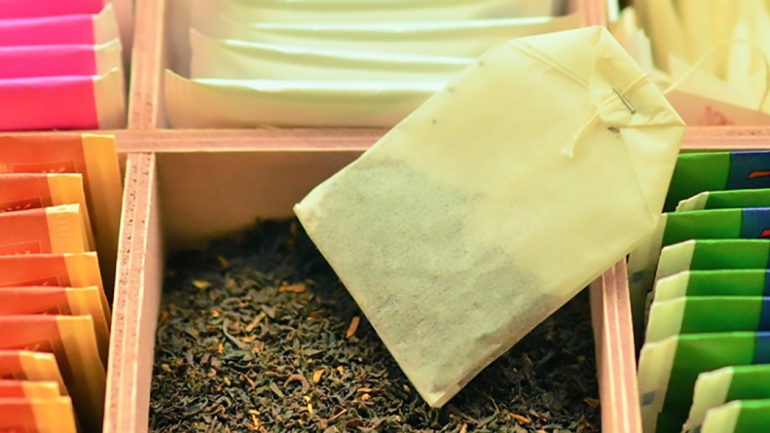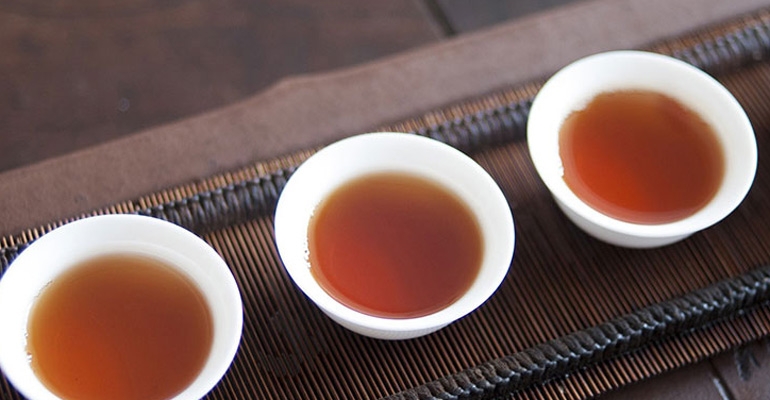“The best quality tea must have creases like the leather boot of Tartar horsemen, curl like the dewlap of a mighty bullock, unfold like a mist rising out of a ravine, gleam like a lake touched by a zephyr, and be wet and soft like a fine earth newly swept by rain.” – Lu Yu (d. 804), Chinese sage, hermit. We all know what a good cup of tea tastes like but we don’t always get a chance to sample the tea before buying it. So how do we know whether we are getting the right type and quality? Often, box labels have a series of letters and number. Here’s where knowledge of tea grading systems come in handy. Knowing the terms enough to decipher the label on the box can provide more insight into the type of tea you are purchasing. The most widely used grading systems are popularised by the British and the Chinese. Less common but equally extensive are the Japanese, Indian, Korean and Taiwanese systems, though arguably some experts believe they are more holistic systems. However, the lack of international standardization for tea grades poses a problem. Unlike tea brewing, which boasts an ISO category (ISO 3103), tea grading systems are of the grade varies according to its country of origin. There is also arguably a disproportionate amount of attention paid to the visual appeal of the tea leaf, rendering other vital factors such as soil quality and climate as less important. While the grading is crucial, it doesn’t always necessarily indicate good flavour or quality. Further, each individual system covers different teas and not all types of tea manufactured is unified under 1 system. British Tea Grading System As mentioned, tea grading varies by country. The most commonly known system, the Orange Pekoe system, was devised by the British. The origin of the name is speculative and credit for popularising it goes to Sir Thomas Lipton, the tea magnate. The term “Orange Pekoe” is sometimes misunderstood as referring to the flavour of orange. While “Pekoe” can be credited as a corruption of the dialect word for the Chinese “peh-ho” tea, the reference to Orange is speculated to be a “public relations” exercise to associate the Dutch Royalty of “Orange-Nassau” with tea (as they brought tea to Europe). Another theory claims the term emerged from the bright copper hue of an oxidised and finished Pekoe tea. Type of tea graded: Black tea. It is commonly used to describe a basic, medium grade tea containing many appropriately sized whole leaves. In some regions, such as North America, it refers to any black tea. Grading methodology: Grading is based on the ‘size’ of the individual leaves and flushes, which is determined by their ability to fall through the screens of special meshes. At the same time, the “wholeness” of each leaf is also tested; the less the leaf breaks, the more “whole it is”. It is believed that the size and wholeness of the leaves is likely to have a big influence on the taste, clarity, and brewing time of the tea. As black teas are made up of rolled and oxidized leaf, a perfect unbroken leaf is hardly expected. The higher grades are likely to be the ones which are closest in wholeness and size to a perfect leaf. Terminology: The largest leaves are Orange Pekoe, Pekoe, and Pekoe Souchong. Smaller or broken leaves are classified as “broken” – so Broken Orange Pekoe, Broken Pekoe Souchong, and Broken Orange Pekoe fannings are common references. The last categories are fannings and fines (also called “dust”). Tea makers then add modifiers to describe the leaf in more details. F (Flowery), indicates how the leaves look like crushed flower petals, G (Golden) indicates the level of golden leaves, T (Tippy) indicates the number of flower buds. For example, GBOP would be Golden Broken Orange Pekoe and FBOPF would be Flowery Broken Orange Pekoe Fannings. In Real Life: In brewing, flavour and color come out of the larger leaves more slowly than out of the broken and fine grades. The broken grades, which make up about 80 percent of the total black tea crop, produce a stronger and darker tea. The grades have nothing to do with the quality or flavour of tea; they simply refer to leaf size. Chinese Tea Grading System Type of tea graded: Green tea. Grading methodology: Even within this system, each famous tea (like Longjing and Dragon Well) has its own grading system so it will vary greatly. Generally, each Chinese grade describes the quality and shapes of leaves off the bush (reflecting the skill of the estate/picker). The general philosophy is that younger, referring to unopened or newly opened buds and leaves, are the purest and most fragile of vessels, packed with healthy, flavoursome polyphenols and the other necessities for fine tea. Terminology: Chinese teas are usually numbered, first being the highest grade and onwards. The lower the number, the less the quality and grade of the tea. Theoretically, there is no end to the numbering but generally, the lowest grades are considered to be 7 to 9. In addition, there might be references to the season of harvest. This is referred to as the Flush. Certain seasons are thought to yield a better quality of flavour. Chinese tea names are also often poetic and descriptive of the leaf (‘Hairy Crab’, ‘Longevity Eyebrow’, ‘Red Snail’) and can indicate where the tea came from. These naming protocols are often contained lists known as “The Ten Famous Teas of China.” For a tea to be listed, it usually has to meet the following criteria : (1) It was once considered to be a tribute to the imperial court (2) It has a distinctive shape, flavour and aroma, easily distinguished from other styles (3) It has been recognised nationally or internationally and (4) the tea has been produced from a commonly known local variety of tea that has strong and widespread appeal. In Real Life: Similar to the Orange Pekoe system, while a tea like Pre-Qing Ming Dragon Well (“before the rains”) tells you the type of tea and the quality of the leaf production, it is not necessarily indicative of flavour quality. Japanese Grading System Interestingly, in Japan, teas are not graded by size of leaf. Most Japanese teas are blended in their final stage of production, hence leaf size or wholeness are irrelevant. Several lots of varying sizes are mixed for cup consistency. Type of tea graded: Green tea. Grading methodology: There are three main visual indicators to assess the quality of tea : the shape, the colour and the brightness. The shape directly reflects the selection and production process of the tea while experts know the appropriate shade of green for each variety. Terminology: The lowest grade is Kukicha, and is in fact made from the twigs and stems of the tea plant, and historically given to children and seniors. The next grade, Bancha, is still rather low in quality and is not often sold by specialty tea companies. Nevertheless, its robust flavour is appreciated as it complements mealtimes. The third grade is Sencha, “roasted tea”, the most common Japanese tea, and refers to an older style of processing Japanese green tea influenced by Chinese tea processing. The highest grade, is Gyokuro (“Pearl Dew”). This tea is very labor-intensive, and is shade-grown, with the tea bushes shaded from direct sunlight 20 days before harvest. It is made only with the first flush leaf and its special processing results in a tea with a sweet, mild flavor and fresh, flowery-green aroma. Some may consider Matcha, which is the Gyokuro ground into a fine powder, as the highest grade of tea. In Real Life: Reputation is equally important so it is always advisable to do your research and ensure you’re getting tea from a reputable teahouse. Rest of the world Taiwan has a robust tea culture and is most famous for oolong teas. It has the honor of being the only major tea producer to actually grade its tea on flavour as well as looks. Their grading used to be government-run. Even though it is no longer publicly funded, it is preferred by private buyers and farmers as it works so well. Taiwan holds regional tea competitions and the scoring breakdown – 20% aroma, 20% dry leaf appearance and 60% flavour – is also used in formal grading. In Korea, green tea is not so much graded as merely categorized, based on the date of harvest and the maturity of buds or leaves plucked. The four traditional grades are Ujeon (First Pluck), Sejak (Second Pluck), Joongjak (Third Pluck) and Daejak (Fourth Pluck). Each grade has particular and unique characteristics, reflective of each season and do not reflect better quality, even if the early harvests are more expensive. The high price tag is more likely to be a result of the low supply of buds in early seasons. Other ways of determining quality As pointed out, these grading systems tend to focus on the visual, which is not always a reliable indicator of quality. While obvious, it is undisputed that tea tasting is the best way to determine quality. High-quality green tea will taste fresh and won’t be too astringent. Black tea will also be fresh and should be full-bodied. Good tea has a sweet aftertaste and should easily slip down the throat. The aftertaste should linger for a noticeably long time. If you can’t taste the tea and you’d like to verify the grade on the label, smell the tea. There should be an obvious fragrance to dry tea leaves. Green tea will emit a light soothing fragrance while the aroma of the black tea is floral and sweet. Quality scented tea will maintain its aroma over multiple infusions. If you’re buying online, then it is best to buy from companies that can clarify your doubts about tea properly. This is important because the tea industry has many middlemen, so the vendor whom you buy tea from may be getting his information from an unreliable source. Part of the journey in becoming a tea connoisseur is understanding what makes up the quality. The grading systems are a first step towards that but it’s important to experience the tea yourself. Ultimately a cup of tea is only as good as its taste, no matter what the labels say. Until there is more rigour in how tea is internationally graded, these systems act merely as a guideline. Sources https://sevencups.com/learn-about-tea/how-to-judge-tea/ https://www.teaclass.com/lesson_0210.html http://worldteanews.com/insights/bop-op-tgfopswhy-tea-grades-important https://www.teabox.com/tea101/tea-grades/ https://en.wikipedia.org/wiki/Tea_leaf_grading http://www.theodora.com/encyclopedia/t/tea.html https://www.jiangtea.com/2012/02/06/what-is-china-tea-grading-system/#.WXMi3-vysuU http://www.thefragrantleaf.com/guide-to-japanese-teas https://www.linkedin.com/pulse/tea-grades-taking-mystery-out-how-graded-darlene-green







